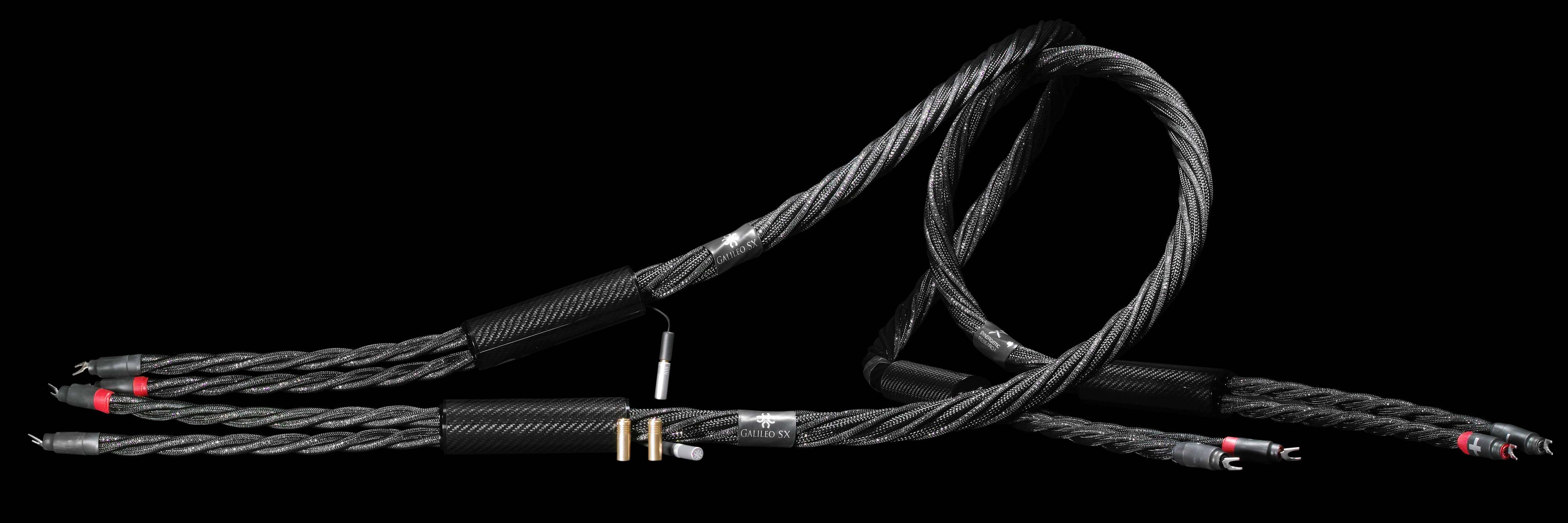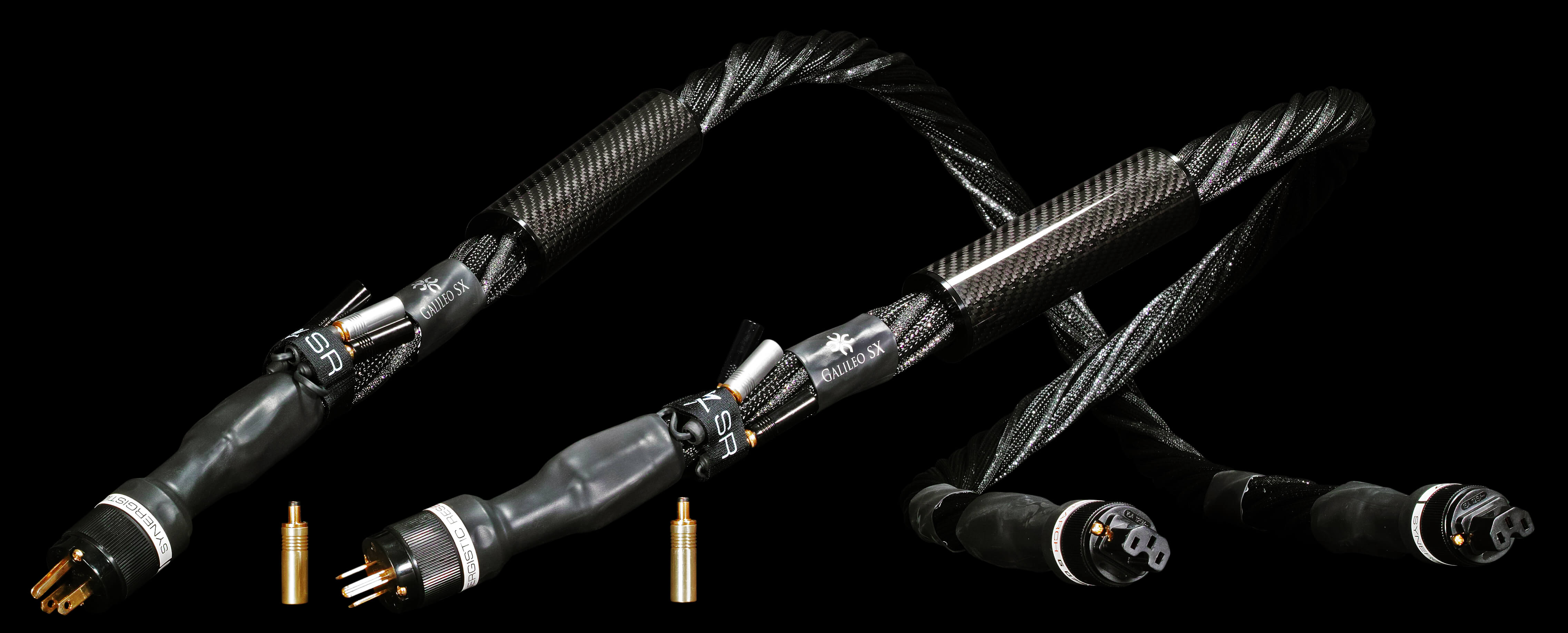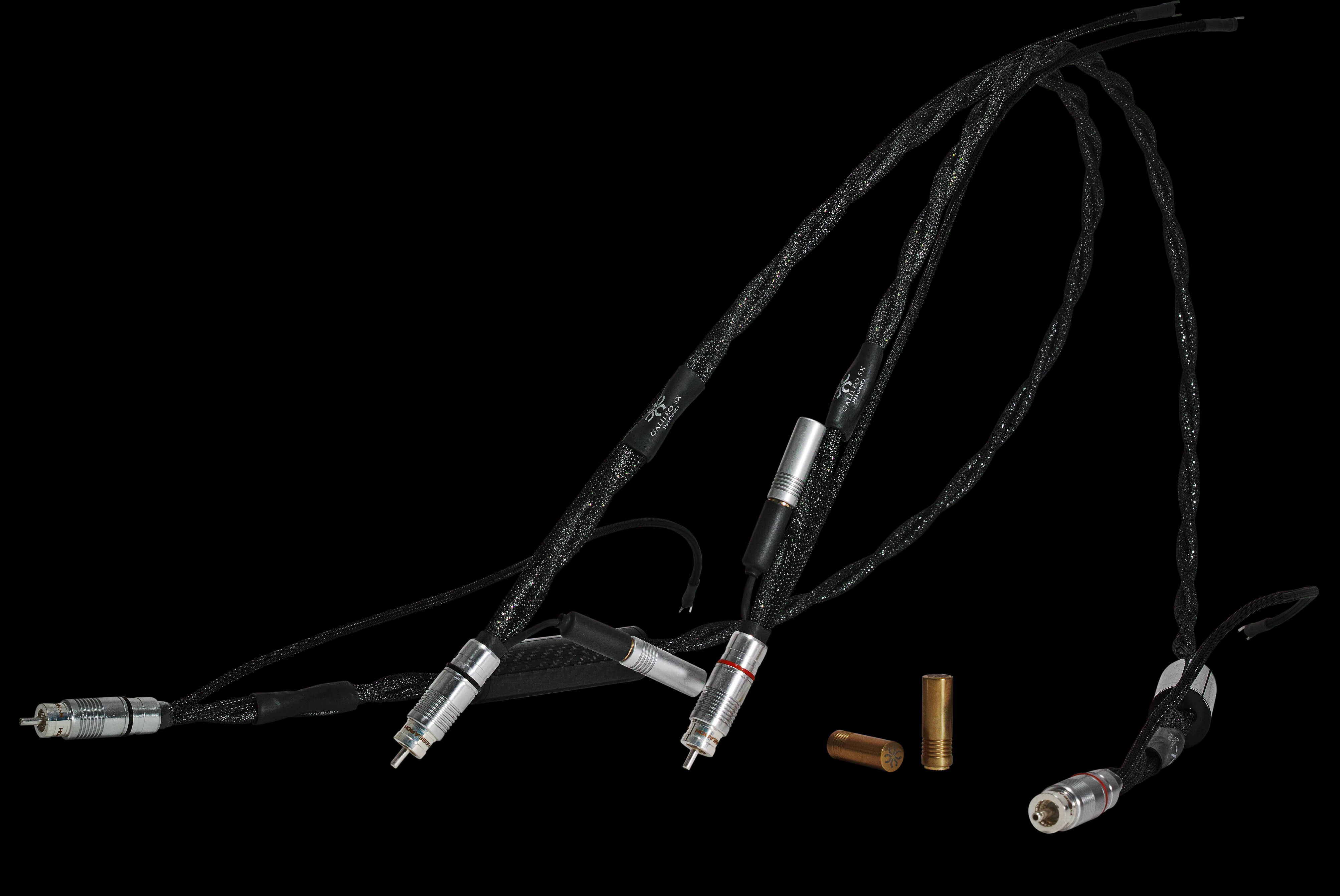Galileo UEF
Synergistic Research Galileo review.
By Jonathan Valin
“I’ve been using various generations of Synergistic Research interconnects, cables, and power cords since Ted Denney first introduced his original ultra-complex, ultra-expensive Galileo line about a decade ago. There is a simple reason for this: With a first-rate source and first-rate system, Synergistic Galileo UEF allows playback to sound more like the real thing more often than most of the other wires I’ve auditioned (regardless of how much they cost). There are, doubtlessly, technical reasons for Galileo’s UEF’s audible superiority, and I’ll come to them (or what is claimed about them) anon. But I want to start with a case in point that, for those of you who know my listening biases, may say more than all the mumbo-jumbo cable-makers (including Synergistic) shovel out there and expect you to swallow. As most of you know I was and am an analog devotee. I don’t listen to digital, save for the occasional review, because good digital doesn’t sound as much like the real thing to me as good vinyl. However, this long-standing bias has recently been diminished. I’m not going to attribute this transformation strictly to Denney’s Galileo UEF interconnect, cable, power cords, and PowerCell 12 UEF SE power conditioner—that would be a considerable overreach. No, the primary difference here is the source— SB’s Reference DAC (souped-up with MSB’s Mono Power Base and it’s Femto 33 clock). This is the most lifelike digital source I’ve heard since the
It’s a funny thing about realism in audio playback. You don’t really need experience or expertise to discern it, although you may need both to explain it. It’s just there—immediately and unmistakably. When I played the Synergistic / Constellation /

This shock of recognition is what you should get—first and foremost—from any great high-end audio system. But of course you don’t—or at least you don’t on a regular basis. There are just too many variables that get in the way—the primary one being the quality of the recording and mastering. No, the best you can hope for is a system that will deliver this supreme sense of bliss whenever conditions permit. Galileo UEF does that more often than almost anything else I’ve tried—and does it on some cuts where other wires don’t.
What is Galileo UEF getting right—or righter? Well, that’s always the question, isn’t it? And as usual, it’s hard to answer without resorting to audiophile jingo, which (as noted) is fundamentally unnecessary. When you hear something sound “real” enough to give you that thrill of recognition it is ipso facto obvious that the system is getting everything of audible musical importance “right” (or at least everything that the playback medium is capable of capturing)—timbres, dynamics, durations, pitches, imaging, soundstaging, etc. And it is delivering all of them with the inimitable immediacy of real music being played live. This sense of every musical element being presented with lifelike pace and in lifelike proportion is what fools and delights you. And it’s this sense of lifelike pace and proportion that Synergistic Galileo UEF offers up on a more regular basis than almost any other cables I’ve yet used or heard.
How Denney and Co. have created this “cleaner,” more neutral, more transparent, higher-fidelity signal path really comes down to the constant improvements they’ve added to the Galileo platform over time. The original Galileo had certain unique features that made it an audiophile standout and a technological tour de force. For one thing, it used wires of different high-purity metals—not twisted together regardless of the mojo of the twist) but run separately. These individual “air strings”—current-bearing, actively shielded, copper/silver alloy, pure silver, pure gold, or pure platinum conductors—were routed (via LEMO connectors) into and out of free-standing electromagnetic power-conditioning/active-shielding junction boxes (called “Active Mini EM Cells”) that themselves were plugged into “quantum tunneled” Mini Power coupler power supplies (wall-wart-like devices that provided the DC current for the active shielding and EM power conditioning of the cells and the precious-metal “strings” attached to them). Obviously Galileo involved a lot of connections and a lot of connectors (twenty separate LEMO plugs for a single set of XLR Interconnects), making for a complex system that despite its gorgeous sound was prone to breakage due to the effects of gravity and (in this reviewer’s system) the constant plugging and unplugging of component parts.

To solve these issues, Denney next introduced Galileo LE, which to my ear gave you most of the sonic virtues of the original in a much sturdier (though every bit as sophisticated and ingenious) package, priced at about two-fifths of what Galileo cost.
Like Galileo Senior, Galileo LE was not just a series of similarly constructed interconnects, speaker cables, and power cords. It was an entire system of wire and power- conditioning products. The main physical differences between it and Galileo were structural. The principles behind both cables (e.g., active shielding, grounding, and tuning of the wire) remained the same, but where Galileo looked like an “exploded view” of a typical cable—with its separate air strings running between free-standing electromagnetic junction boxes—LE looked more like a conventional, braided, single-piece wire.
Looks, however, were deceptive as each leg of LE interconnects actually comprised three to five individual, pure-silver “air strings,” each with its own separate air dielectric and grounding wire (three sets of these strings per interconnect for RCA connectors and five sets for XLRs). Although the strings were braided together
into a bundle, each string functioned independently and each was individually hard-wired into and out of two carbon-fiber- encased EM Cells, which were now integral in-line parts of the cable rather than separate freestanding objects. When these EM Cells were powered by Synergistic’s wall-wart-like Mini Power Couplers (supplied with each cable), they performed the same function that the outboard Mini EM Cells did with Galileo Senior—actively shielding, conditioning, grounding, and tuning the air strings for audibly lower noise and higher resolution and transparency.
In the system I was then using, the Galileo LE system (with active components hooked up to SR’s PowerCell 10 SE Mk III power conditioner) was among the most gorgeous-sounding wire on the market. Like Galileo père, however, it was quite complex and not purely neutral. Most of the Synergistic Research wire I’ve heard in the past

What’s changed here is not the Galileo principle—UEF is still a system of actively shielded, conditioned, grounded, and tuned “air strings,” bundled together though functionally independent. What has changed are the parts and, to an extent, the complexity of their implementation. Here is hat Synergistic has to say about its new interconnect (the speaker cable verbiage is nearly identical):
“[Galileo UEF XLR interconnects] are built from four hand-made 99.9999% pure silver and graphene air strings with] UEF graphene shielding in parallel with two fourth-generation Tricon silver matrix geometries for a total of 12 cables in a single pair. Each individual geometry is sheathed to cancel vibration without resorting to excessive dampening, which can compress sound. All six UEF graphene shields are tied to our Ground Plane technology, which passes static electricity and noise picked up by the shields direct to ground, and not to your components… To maximize musicality we developed a complex multi-layer UEF inductive cell made from pure silver foil and graphene with a Japanese silk dielectric…for the organic sound that silk imparts when used as a dielectric. Lastly, we developed two very special UEF tuning modules that change the vibrational characteristics of the cable at the signal or electron level [sic]. The gold UEF tuning module imparts a warmer more layered balance to your music while the silver UEF tuning module with its faster vibrational characteristics transmits the maximum information while still sounding musical. The choice between gold, silver, or none is yours to make and, when you do, you’ve voiced your cables to match your system and personal reference.”
I know. Like all cable-maker geek-speak, this is tough to fathom. But the bottom line isn’t. Denney is how using graphene as well as silver in his air strings and shields, Japanese silk and graphene in his dielectrics, silver, and graphene in his “inductive cells” (coupled to shields, conductors, and grounds to dissipate noise), and new tuning modules to sweeten the sound to taste. In essence, these are the same design elements as those in the original Galileos, only materially more sophisticated and functionally simplified.

According to Ted, yours truly played a part in the voicing of the Galileo UEFs, at least to this extent: After all these years Denney has a pretty good idea of the timbral and dynamic balance I prefer and he made an effort (or so he tells me) to engineer higher energy, higher resolution, and more neutral timbre into the
I’ve already touted what it can do with a great digital source component (and a great digital recording). Happily, it does exactly the same thing with great analog sources and recordings. But to hear an LP that is capable of the realism I hear on the Harry Connick, Jr. CD is to also hear a new virtue added to what digital does well—a three-dimensionality that DACs simply don’t supply (or at least don’t supply in the same lifelike abundance).
Voices and instruments aren’t just unmistakably “right” in timbre, pitch, duration, and dynamic; they also have the lifelike bloom that you hear listening to real instruments being played in a club or a concert hall—the “action” that turns (in HP’s famous paraphrase) painted ships upon a painted ocean into three-dimensional semblances of real-life instruments making real-life music. Once again, it isn’t the cables alone that are doing this—it’s the entire system (and the high-quality source). But Synergistic Research Galileo UEF is, nonetheless, playing its part (and also clearly showing you how even the best CDs differ from the best LPs).
While UEF isn’t cheap, it is a no-brainer top recommendation, as is the PowerCell 12 UEF SE that you plug your gear into and that has precisely the same neutrality, fidelity, resolution, dynamic, and realism as the cables (though, on a functional level, the PowerCell’s AC receptacles could and should be tighter in grip, IMO).
Jonathan Valin - The Absolute Sound - Issue 287 - September 2018
